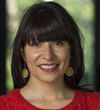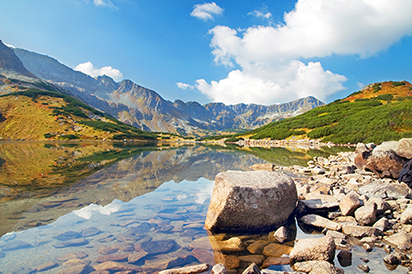Reflections on Indigenous Land Acknowledgements on National Indigenous Peoples Day

Candace Brunette-Debassige
Special Advisor to the Provost (Indigenous Initiatives)
Western University
Candace Brunette-Debassige is a Mushkego Cree woman originally from Fort Albany First Nation (Treaty 9 territory). Candace brings over 15 years of leadership experience serving Indigenous students and communities in educational settings. Currently she is serving as the interim Special Advisor to the Provost (Indigenous Initiatives) at Western University where she has also worked as the former Director of Indigenous Services for 5 years. In this capacity, Candace was actively involved in the development of Western’s first ever Indigenous Strategic Plan. Candace is a doctoral candidate completing research in the Faculty of Education that centers on the experiences of Indigenous women administrators enacting Indigenizing policies in Canadian universities. Candace also teaches ‘Becoming Educational Leaders’ course as part of the Masters of Professional Leadership in Education Program.
Introduction
I am an Indigenous woman (Cree, originally from Petabeck / Fort Albany First Nation, in Treaty 9 territory) who grew up in small town northern Ontario. I now live and work in London, Ontario – a city situated on the traditional lands of the Anishinaabek, Attawandaron, Haudenosaunee, and Lūnaapéewak Nations – lands connected with the London Township and Sombra Treaties of 1796.
Over the last 16 years, I’ve worked in Indigenous education (K-12 levels) as an advisor in some way, shape or form. And every year, shortly before or during the month of June, I’ve received several requests from non-Indigenous colleagues looking for guidance on how to acknowledge National Indigenous Peoples Day. This year, I also received an invitation to write this blog. I embraced the opportunity to voice my truth, which follows. A short caveat: Indigenous truths are sometimes hard to hear, but truth-telling comes before reconciliation as necessarily as a foundation before a building.

National Indigenous Peoples Day was first established in 1996, and it actually means a lot to me as an Indigenous woman in Canada. Like the day of the national apology on residential schools in 2008, I still remember the day it was announced by the government, and I have celebrated it annually in the context of family and community ever since. Unlike some Indigenous peoples, I identify to a certain degree as a Canadian, although it is a complicated and ambivalent relationship to be sure. However, National Indigenous Peoples Day is not about government recognition for me. It is about celebrating tremendous Indigenous resilience and survival against great odds. I often think about my ancestors who came before me, who persisted and resisted against government forces and inhumane attempts to eradicate and erase our Indigeneity, relationship to land and ways of knowing.
Truthfully, I also sometimes wonder what this day means to the average settler Canadian. I wonder how much Canadians know or care to know about this particular ‘holiday,’ its origins, and their relational responsibilities to Indigenous peoples – after all, we are all Treaty people. I wish I did not have to care about what most Canadians think. But the truth is that the average Canadian’s view of Indigenous peoples matters a lot in our liberal democracy, where the tyranny of the majority prevails and Indigenous voices are all too often relegated to the margins of societal decision-making.
On this National Indigenous Peoples Day, I wish that the average settler Canadian appreciated how greatly they have benefited as a result of dishonoured Treaties with Indigenous peoples. These early legal agreements between settlers (and later governments) and Indigenous Nations, which formed the basis of all land acquisition in this country, contained promises to Indigenous Nations in exchange for lands. My great great grandfather was present during the signing of Treaty 9 in our community. When these Treaties were dishonoured and promises broken, whole communities and families were impoverished inter-generationally. (In other words, if your parents and grandparents are made destitute and/or traumatized, you will also grow up in lack and/or trauma and have a much harder time in life.)
Many Treaties were agreed upon in good faith that Nations would live together peacefully in abundance and without interference. Upon Confederation, the Canadian government unequivocally broke these promises. The Indian Act legislation remains a testament to this truth. In her book Conversations with Canadians, Sto:lo writer Lee Maracle notes that without the Indian Act legislation formed in 1876 (and still in place today), which makes ‘Indians’ wards of the State, Indigenous lands could not have been appropriated and sold under European private property laws. I wish Canadians understood how these colonial structures continue to operate in ways that greatly disadvantage Indigenous peoples.
Beyond Acknowledgements
In a national era of reconciliation, land acknowledgements are almost a daily occurrence in most Canadian universities. These acts of recognition remind me of how some holidays have become tokenized and symbolic in nature. Victoria Day comes to mind. Interestingly, Victoria Day has been observed in Canada since 1845 and is considered a federal statutory holiday that accompanies a series of protocols and holiday celebrations. As a critical scholar, I am often troubled by the superficial ways that some people take up Indigenous land acknowledgements post-TRC, and I worry that it will only get worse in time. While their mere reverberation is a dramatic shift from the former omission, there continues to be a lack of substance, meaning and action behind the words spoken. While I acknowledge that I see a few well-intentioned colleagues trying -- and getting out of -- their comfort zones, I do feel that we need to go a lot deeper in developing meaning and taking action if there is to be true reconciliation. Because the fact remains that symbolic gestures, or recognition politics, do not necessarily translate into relationships, action or equitable realities and materiality for Indigenous peoples.
A powerful pedagogy for reconciliation is put forth by settler scholar Paulette Regan in her book Unsettling the Settler Within – one that I believe may help Canadians think about our relationship to National Indigenous Peoples Day and land acknowledgement practices in ways that could move beyond recognition politics. Regan’s approach combines theory, critical reflection, and action to transform Indigenous and settler colonial relations. She argues that settlers must be willing to really listen to hard truths that challenge the taken-for-granted dominance that marginalizes Indigenous voices. She welcomes settler Canadians to sit in their discomfort with the truths and to connect their head, heart and spirit in the process.
It is with Regan’s “unsettling” learning orientation in mind that I invite settler Canadians to reflect more deeply on their personal land acknowledgements. By imagining your own families and communities being made destitute by broken Treaty promises, all justified by racism. By hypothetically positioning yourselves personally and contextually in relation to land and place past and present. By acknowledging and questioning inherited systems (educational, health and judicial, to name few) that often automatically reproduce unequal relations of power that deny Indigenous peoples voices, access, participation and knowledges.
National Indigenous Peoples Day is a good day to celebrate. Land acknowledgements are also good. But beyond land acknowledgements and holiday celebrations, we need to proactively check in and listen to the margins, reflect on what we are saying versus what we are doing, and ask how we can contribute to meaningful and equitable change that raises Indigenous voices and agency in our institutions. On this National Indigenous Peoples Day, I invite settler Canadians to sit with these difficult questions, to reflect on their complex positionalities and privileges. In the spirit of truth and reconciliation, we must remember and recognize National Indigenous Peoples Day, but we must not leave it there. We need to go further. Learn more. Sit in discomfort. Listen. Read. Build relationships. Reflect. Take action. Repeat.
Context for National Indigenous Peoples Day
1) 1867- Canadian Confederation
2) 1876 – The Indian Act legislation established
3) 1961- Indigenous peoples earn the right to vote in Canada.
4) 1982 -The National Indian Brotherhood (now called the Assembly of First Nations) calls for the creation of a national day.
5) 1982- The Canadian Constitution Act affirms rights of Indigenous Peoples
6) 1996 -The Royal Commission on Aboriginal Peoples recommends a dedicated day.
7) 1996 –The Governor General Romeo LeBlanc announces that June 21st is a national day to celebrate Indigenous peoples’ contributions.
8) 1996- The last residential school closes.
9) 2006- Indian Residential School Settlement Agreement a class action settlement between the Government of Canada and residential school survivors
10) 2008- The Truth and Reconciliation Commission created (paid from survivors settlement package)
11) 2008 –The Prime Minister, Stephen Harper reads a public apology for the Indian Residential School.
12) 2015 –The Truth and Reconciliation Commission releases 94 calls to actions.
13) 2017 – The Prime Minister Justin Trudeau announces plans to create a national holiday.
